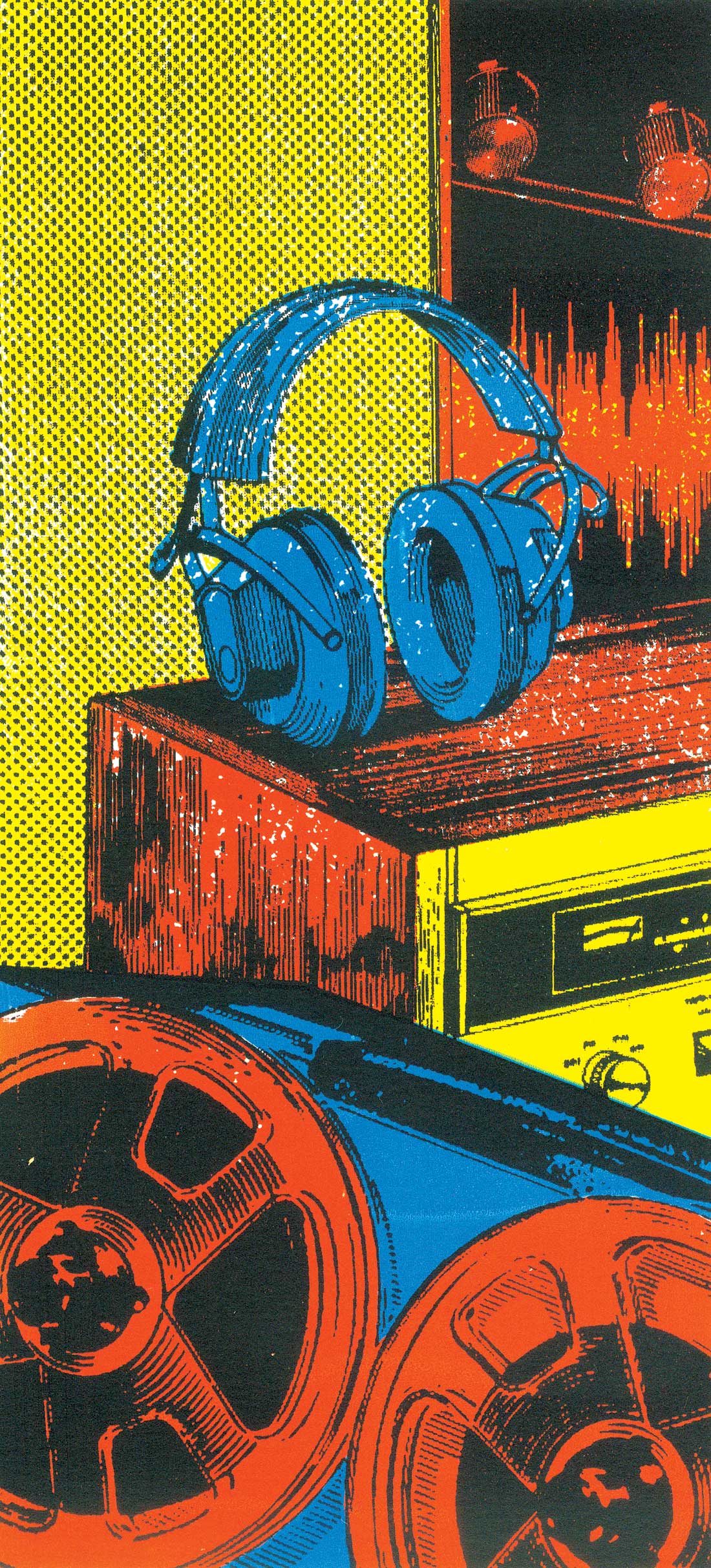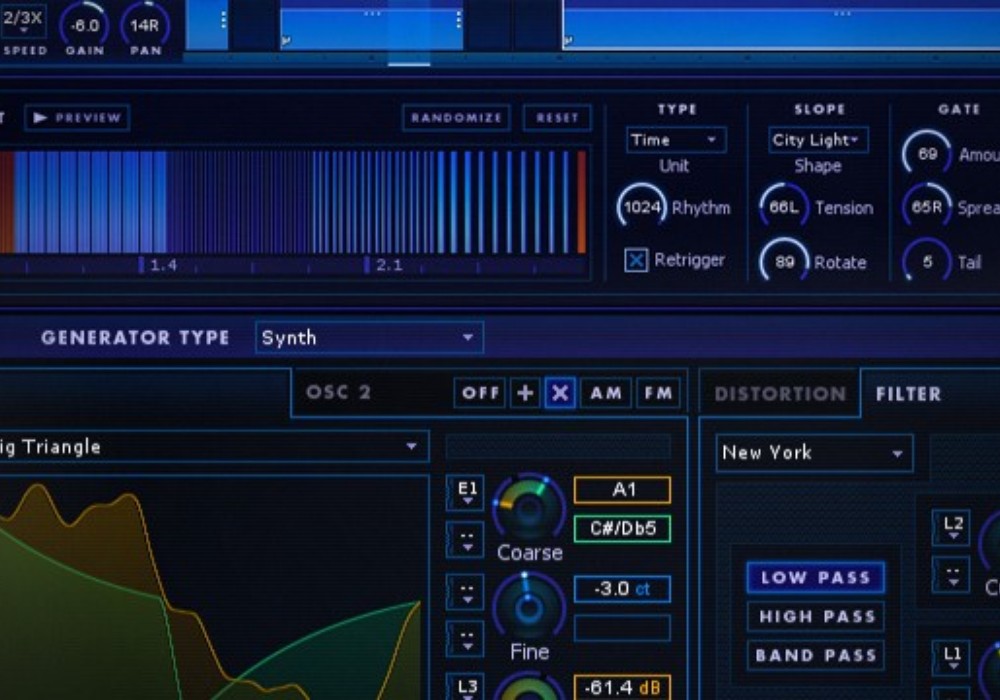The Weiss DNA1 is a 2RU-height audio restoration dynamo that performs several noise-
reducing tasks via the DeClicker/DeCrackler and DeNoise modules, along with K-Stereo ambience recovery and M/S routing. All can be used alone or together in any combination there of. What makes this box really unique is its ability to do all this processing in real-time.
Daniel Weiss never ceases to amaze me. When this unit first arrived, he said that he was working to improve the DeClicker section of the unit. He suggested that I use the other functions but hold off on the DeClicker/DeCrackler till he could get me the updated chipsets. Of course, I had to dive into this section first to see why it would need further development. The process of real-time de-clicking of program material can be quite tricky, as usually no two clicks are of the same intensity or duration. To this end, it is suggested that taking a section of the most offensive click and looping it is the best way to determine height and duration and therefore achieve the greatest results. That's fine when you only have a few clicks and pops due to clocking problems or such in the source material, but what about DeClicking/DeCrackling a vinyl record? I dove in with the hardest material possible, an old scratchy vinyl record. To tell the truth, it took quite some time to get used to the DeClicking section of the unit; it was pretty deep. The DeCrackler is a subset of the DeClicker section, which also includes a Smooth parameter after it for capturing the smallest of surface noises. Smooth is used to get rid of the fine crackle that may be in certain program material such as vinyl. There were many pages to go though just trying to get near-satisfactory results. It took days if not weeks to come up with the magic combinations and to gauge the sensitivity of the clicks without going too far and creating what are called "false positives" in the program material (i.e. de-clicking something that wasn't an actual click in the source such as a drum side stick). However, after a period of time, I got fairly good at using the DNA1, and after a half hour or so, I could dial in some very satisfactory results. With parameters to control quality, sensitivity, and click type, you can dig in pretty deep in the semi-auto or auto modes. There are also presets to help get you started.
Well, in come the new chipsets from Daniel Weiss. I pop them in and notice where there used to be ten menus to page through in each button function of the DeClicker/DeCrackler; now there are only four. Over the months that I had the unit, I had got used to these pages and thought now the unit would be more limited in its function. Boy was I wrong. Now what used to take about a half hour to dial in while fiddling through the menus only took five minutes! Daniel said he wanted to make it easier, and he did. Way easier in fact. This is the most powerful full-featured click-removal algorithm I have ever used.
When you combine the DeClicker with the DeNoiser section, the unit becomes a power house. The DeNoiser has three basic modes: auto, semi-auto, and manual. This noise-removal section, originally developed by Pure Notes Technology, is very easy to operate. In auto mode, the noise floor (if you will) is represented by a line that goes across the frequency plot on the display of the unit. The line indicates the adaptive noise discrimination level. Signal components below the line may be affected by the noise-removal section, depending on time-frequency characteristics. Listen while you are watching the display, and you can achieve some pretty fantastic results in pretty short order. You have to be fairly careful when using the noise-removal section as it's pretty easy to start removing things you don't want to remove, such as in my case of restoring this song on the vinyl record. You could dial the DNA1 in and remove all the vinyl noise off the record. Where it produced very clean, noise-free music, it didn't sound natural at all. Dial it back and listen to the vinyl come back. Pretty damn cool. Whereas typical noise-removal software only takes a small snapshot of the noise before applying itself across all the program material, the Weiss unit works in real-time to remove as much of the noise signature as you want, not just a small static portion of it. I've never quite seen or heard anything like it. Keep in mind when doing any noise-removal process, you must weigh the benefits against the original material. It is very easy to go too far and to start dulling the material off. Let's face it, a lot of what we call "air" as engineers can be seen as "noise" by any of these devices. However, sometimes to get the noise, you have to lose a little air. Of course, in the "air" lies not only the high end of the material but also the reverb or natural ambient sounds. Trade-offs abound. Enter the ambience-recovery section.
The K-Stereo ambience-recovery section of the DNA1 was actually developed by mastering engineer Bob Katz.
This section is used to recover ambience that may be lost due to the noise-removal process. This feature was indispensable when doing any form of heavy noise-removal as I was able to bring back much of the ambience and high end that "went missing" while processing. Even when lightly processing, I found that I could easily make the finished track sound as natural as the unprocessed track. With added control over the depth (front to back soundstage) and width (how expansive the ambience may be), it is easy to dial back in just the right amount of "room". The addition of ambience filters gives this section even greater control, allowing the engineer to actually equalize the ambience of the material. The most commonly used control will probably be the high-pass filter. With this control alone, it is possible to tighten the spatiality of the bass instruments without affecting the ambience in the midrange and highs. There is also a great amount of overall level that can be achieved with very little negative artifacts created using this section (but I'm not supposed to mention that).
Inclusion of the full-featured M/S (mid/side) processing in the unit adds that much more power to the features described above. I wasn't sure how useful this feature was going to be until I processed a mono track with it. Need to only process the center with noise-removal, you got it. Or just dial down the crackle on the sides of that mono recording, not a problem. How about do both at the same time? Options and combinations seem limitless.
I know of no other box that offers this powerful of a feature set, let alone quality of restoration enhancement, as the Weiss DNA1 does. Weiss also included the POW-R dither subset in the unit. For anyone doing audio restoration or forensic work, the Weiss DNA1 would soon become an invaluable tool to have in their arsenal-possibly the only outboard processor they would ever need. I highly recommend that you audition one if your daily work requires such tools. I think it's safe to say that the Weiss team really have a winner on their hands with the DNA1. (DNA1-N with DeNoiser & Ambience, $7400 MSRP; DNA1-C with DeClicker & Ambience, $7400; DNA1-K with Ambience only, $5650; DNA1 with all features, $8975; www.weiss.ch)
Tape Op is a bi-monthly magazine devoted to the art of record making.





_disp_horizontal_bw.jpg)